Shoppers meet brands on crowded aisles. Terms like advertising, merchandising and marketing blur. Confusion costs sales. I felt it when clients asked for “in-store ads” but wanted displays.
In-store marketing aims to influence shoppers inside the shop, merchandising arranges the physical goods to lift sales, while advertising pushes paid messages across media; clear definitions avoid wasted budgets and mixed goals.
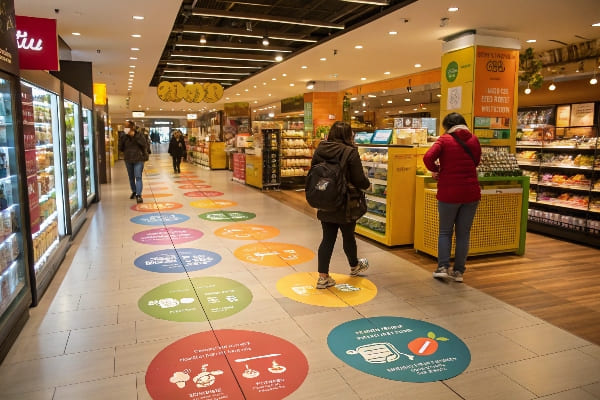
Many buyers leave if jargon blocks understanding. Keep reading so you can brief a designer, brief a media buyer, and brief me without paying for the wrong tool.
What is the definition of in-store advertising?
Pain hides in plain sight. A supermarket tour shows posters, shelf talkers and floor decals screaming offers, yet many managers cannot label them. I once replaced a broken poster the night before launch.
In-store advertising is any paid visual or audio message placed inside a store to attract shoppers’ attention and nudge immediate purchase.
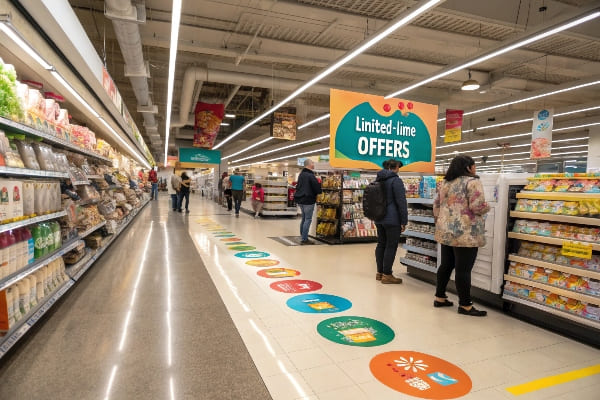
Channels, Costs and Payoff
| In-Store Ad Type | Cost Range | Best Use | Lifespan |
|---|---|---|---|
| Poster | Low | Brand recall1 | 1-4 weeks |
| Digital screen | Medium | Dynamic pricing2 | Years |
| Floor decal | Low | Impulse zones3 | 2-3 weeks |
| Audio spot | Low | Time-limited push | One day |
I see three pillars. Placement decides sightlines. If the screen hides behind tall pallets, forget impact. Content must match dwell time. A five-second read works on a checkout divider but fails on a hanging banner. Maintenance is my third pillar. Dust dulls a foam-board print quicker than you think. I set cleaning rules in every contract.
Budget smartly. Test one store for a week, measure uplift by SKU, then roll out. Keep a control aisle to prove gains. My cardboard displays often carry clip-in frames for swappable posters. That lets clients refresh messages without new hardware, stretching every dollar.
What is the definition of advertising in marketing?
People treat “advertising” as all-powerful magic. But ad spend that ignores its proper scope becomes dead money. I learned this after a customer blamed our display for flat sales when her radio media had the wrong call-to-action.
Advertising in marketing is the paid, controlled placement of persuasive messages in third-party channels to reach defined audiences and build awareness, interest or action for a brand or offer.
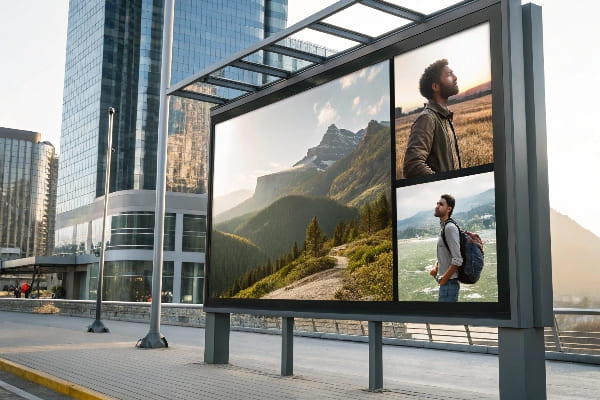
Scope, Media and Metrics
The Advertising Funnel
| Stage | Goal | Typical Media | Key Metric |
|---|---|---|---|
| Awareness | Reach many people | TV, display ads, billboards | Impressions |
| Consideration | Explain value | YouTube, social video, sponsored posts | Click-through rate4 |
| Conversion | Trigger action | Search ads, retargeting, coupons | Cost per acquisition5 |
| Loyalty | Encourage repeat | Email, app push, remarketing display | Repeat purchase rate6 |
Advertising lives outside the store for most of its life. It rents other people’s space. Control exists only in the message and spend. That is why I push clients to align creative with landing pages. A mismatched coupon code kills trust.
In marketing strategy, advertising shares budget with public relations, direct mail, content, and in-store activities. It pulls people toward a place where merchandising and display can finish the job. Ignore that hand-off and campaigns leak profits. My factory’s job starts where external ads stop: the moment someone walks through sliding doors.
What does "in store merchandising" mean?
I once watched a shopper lift a crossbow, then put it back because the shelf wobbled. The display failed the product. That is merchandising pain in motion.
In-store merchandising is the strategic presentation, arrangement and replenishment of products and supporting materials inside a retail space to maximize visibility, value perception and sales.
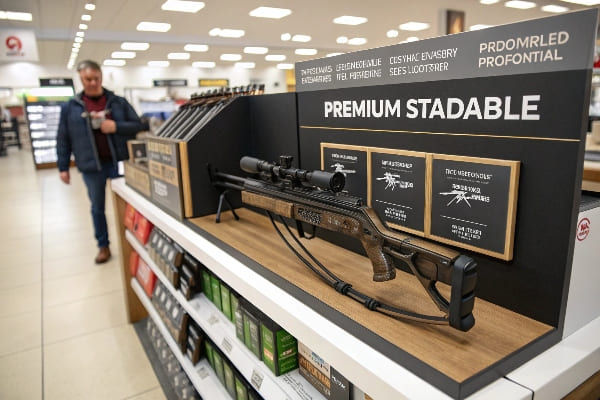
Elements, Tests and Wins
Core Elements of Merchandising
| Element | Purpose | My Quick Test |
|---|---|---|
| Layout | Guide shopper flow | Can I walk the “racetrack” in 60 s? |
| Facings | Ensure stock visibility | From three meters, can I read SKU? |
| Signage | Give info and price clarity | Is price within eye-level zone? |
| Fixtures | Support product weight | Does cardboard bow under load? |
| Replenishment | Avoid out-of-stocks | Is back-stock within one arm-reach? |
Good merchandising is dynamic.7 It adapts to seasonality, traffic heat-maps8 and promo calendars. I teach staff to snap photos daily and mark sell-through. If velocity drops, we tweak facings or lighting. For heavyweight hunting gear, I reinforce cardboard with hidden corflute ribs. That preserves clean lines while resisting 20-kilogram loads.
Shoppers read with their feet. They stop only when something interrupts routine. Color blocking, product pyramids and vertical brand blocks cause micro-pauses. Each pause is a chance to convert. Your planogram9 must plot these pauses like a chess opening.
What is in-store marketing?
The store can speak louder than a billboard if we script it. I learned that by watching a 5-percent lift after adding QR codes on endcaps.
In-store marketing is the coordinated use of displays, promotions and experiences inside retail walls to influence shopper decisions at the point of sale.
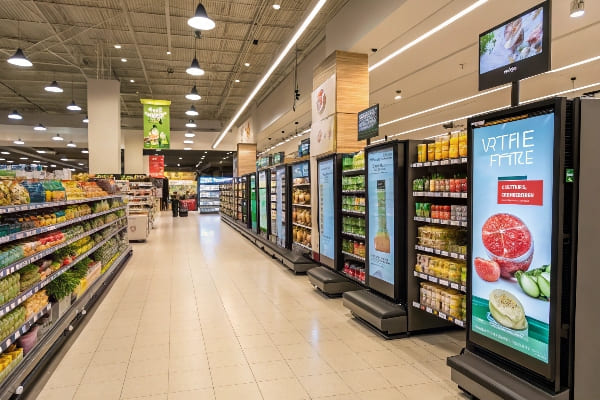
Tools, Data and ROI
Layers of In-Store Marketing
| Layer | Example | Data to Track |
|---|---|---|
| Visual | Cardboard display island | Dwell time, eye tracking |
| Promotional | Buy-one-get-one sticker | Promo redemption rate |
| Experiential | Touch-and-try counter | Conversion to basket |
| Digital overlay | Shelf-edge LCD price tags | Price elasticity index |
In-store marketing mixes static and digital. Static pieces like our corrugated stands cost less and move fast. Digital add-ons such as NFC tags collect data. When Barnett Outdoors rolled out a new crossbow, I embedded a scannable link to a safety video. The scan rate hit 18 percent. That proved the content kept hunters engaged.
Execution needs teamwork. Designers, supply chain and store ops must align timelines. Miss one delivery and a launch window closes. My solution is a three-tier approval system: 3D render, sample, mass production. We absorb prototype loss because repeat orders repay it. This policy calms buyers who fear display failure on Day 1.
What is the meaning of merchandising in marketing?
Marketers often think merchandising lives only on shelves. I remind them it is also storytelling. When I colour-matched graphics to brand Pantone and added scent diffusers, time-on-display doubled.
Merchandising in marketing means turning product arrangement, packaging and store environment into a silent salesperson that reinforces brand promises and drives profitable action.

Story, Sensory Cues and Profit
Sensory Checklist
| Sense | Tactic | Expected Shopper Response |
|---|---|---|
| Sight | Colour blocking, lighting focus | Faster recognition |
| Touch | Textured substrate on packaging | Longer handling time |
| Sound | Ambient brand jingle | Higher recall |
| Smell | Themed scent near display | Emotional memory anchor |
| Taste | Sampling station | Immediate trial |
Great merchandising supports the wider marketing mix. A hero product10 must sit at eye level, priced clearly, with companion SKUs close by. That upsell strategy11 lifted average basket size by 12 percent for a camping retailer I served.
Marketers should set key performance indicators12 before a reset. Units per transaction, stock-to-sales ratio and margin per square foot guide my layout sketches. I split displays into “strike zones” and “support zones.” Strike zones fight for impulse. Support zones hold bulk inventory. This balance keeps costs low because heavy structural parts live only in strike areas.
What is the difference between advertising and merchandising?
I once saw a flashy TV spot promise a free case with every crossbow, yet the store lacked space for the cases. The ad drove demand the merchandising could not fulfill.
Advertising creates demand by communicating outside the store; merchandising captures that demand by presenting products effectively inside the store.
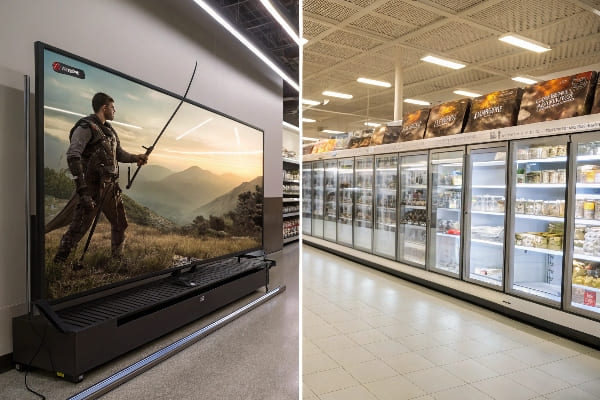
Upstream vs Downstream
| Aspect | Advertising | Merchandising |
|---|---|---|
| Location | Media channels, digital or offline | Retail floor, online product page |
| Budget Owner | Marketing department | Store operations / trade marketing |
| Goal | Awareness and desire | Conversion and ticket uplift |
| Time Horizon | Campaign window | Ongoing, seasonal resets |
| KPI Example | Cost per thousand impressions (CPM)13 | Sales per facing14 |
Think of a relay race. Advertising passes the baton to merchandising. If the hand-off drops, money burns. Brands must align visual codes so a banner matches the shelf. I keep a style guide15 inside every production file to protect typography, colours and hierarchy. When my displays ship worldwide, retailers snap photos upon setup. We compare them to the guide for quality assurance.
Teams that meet weekly close the gap. Share sales data. If an ad drives traffic but not sales, audit the display. If sales rise without ad support, maybe the display deserves more budget. Simple discipline, not big spend, wins the race.
Conclusion
Clear words cut waste. Define each term, align the tools, and let store and media work as one team.
Explore this resource to discover proven techniques that can significantly boost your brand’s visibility and memorability. ↩
Understanding dynamic pricing can help you optimize your pricing strategy and maximize sales in a competitive market. ↩
Learn about impulse zones to effectively design your store layout and drive spontaneous purchases from customers. ↩
Improving your ‘Click-through rate’ can significantly enhance your campaign’s effectiveness. Discover strategies to boost it by following this link. ↩
Understanding ‘Cost per acquisition’ is crucial for optimizing your advertising budget and improving ROI. Explore this link for deeper insights. ↩
A high ‘Repeat purchase rate’ indicates customer loyalty. Learn how to enhance it for your business by checking out this resource. ↩
Understanding dynamic merchandising can enhance your retail strategy and improve customer engagement. ↩
Traffic heat-maps provide insights into shopper behavior, helping optimize store layouts and product placements. ↩
Learning about planograms can help you design effective product displays that maximize sales opportunities. ↩
Understanding hero products can enhance your merchandising strategy and improve sales performance. ↩
Explore upsell strategies to increase average basket size and boost your retail profits. ↩
Learn about KPIs to effectively measure and optimize your marketing efforts for better results. ↩
Understanding CPM is crucial for optimizing advertising budgets and measuring campaign effectiveness. Explore this link for in-depth insights. ↩
Sales per facing is a key metric for evaluating product placement effectiveness. Discover more about its impact on retail success. ↩
A style guide ensures brand consistency across all platforms. Learn how it can enhance your marketing efforts and brand identity. ↩

